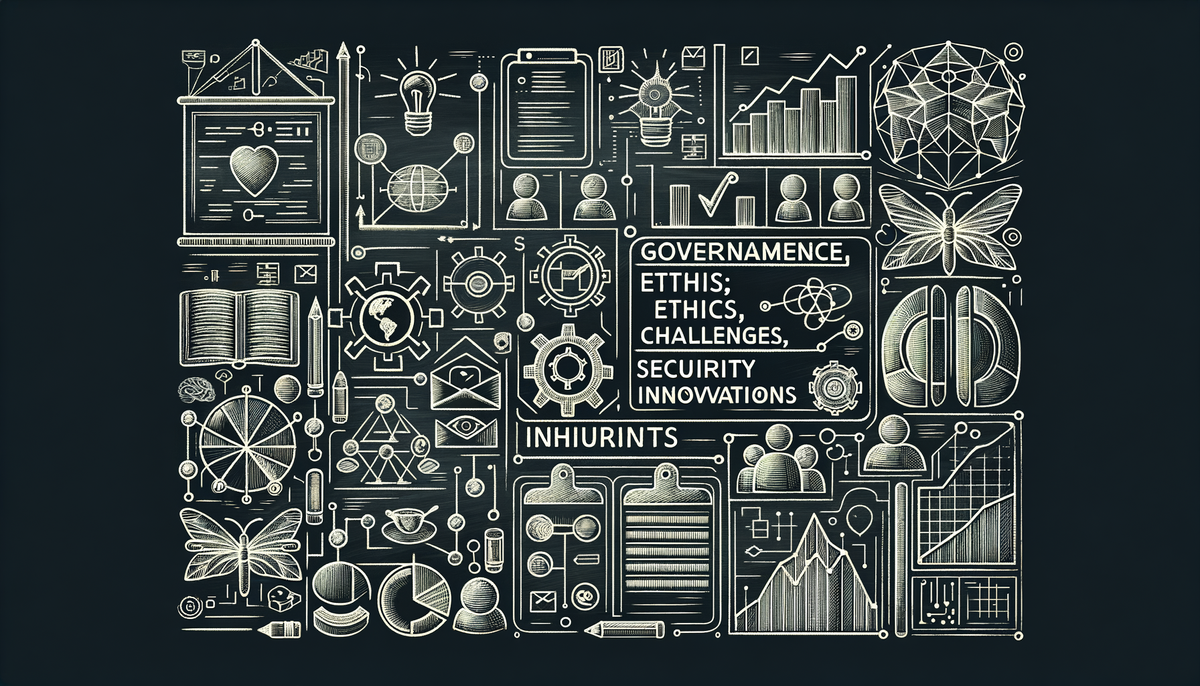AI Developments: Transformations, Challenges, and Innovations

Gemini’s Nano Banana image tool blew expectations out of the water on a recent weekend trial, sparking debates that dovetail with the broader evolution of AI across industries. From tracking the nuances of voice interactions in contact centers to safeguarding vulnerable teens from harmful content, and from the relentless march of AI-powered PCs to the rise of virtual influencers, the rapidly changing landscape of artificial intelligence is both thrilling and challenging.
Innovative Tools and Interaction Paradigms
While comparing cutting-edge technologies, it is hard to ignore the performance contrast between Gemini’s Nano Banana image tool and ChatGPT. The recent deep-dive tests revealed that when it comes to certain visual tasks, one tool clearly outshines the other—highlighting that specialized AI models can offer significant advantages over more general-purpose systems. This observation resonates with the kind of innovation we see in the broader AI community.
Similarly, in environments like AI-powered contact centers, the human touch still matters—voice technology continues to be indispensable. Despite the rise of chatbots and text-based AI, industry experts and research articles emphasize that a natural voice interface enriches customer experience, improving clarity and fostering trust. The integration of voice technology in customer service is evolving, with businesses finding that a genuine human tone cannot easily be replaced by mere text.
Whether you’re a developer or a tech enthusiast, experimenting with these advanced tools can provide new insights into how AI enhances our daily interactions. It’s not just about raw performance but the way these systems transform the way we engage with technology.
Detecting AI-Generated Content and Ensuring Authenticity
As AI continues to generate content at an astonishing rate, discerning what is authentically human-made versus AI-generated becomes increasingly critical. Recent guidelines from investigative journalism networks and research communities stress the importance of transparency and accuracy in this domain. The rapid development of text generators and visual AI tools has spawned robust methodologies for detecting AI-generated material.
For reporters and content curators, leveraging both automated detection systems and traditional verification methods is essential. The emergence of sophisticated algorithms to detect patterns unique to AI content underscores the responsibility of media professionals to maintain trust with their audiences. In an age where the origin of content can blur, ensuring authenticity isn't merely academic—it’s a cornerstone of modern journalism.
The ongoing evolution in this sphere prompts us to advocate for wider adoption of these verification strategies. Researchers continue to develop new models that prove increasingly adept at discerning subtle linguistic and semantic cues, fortifying the bridge between digital creation and human oversight.
Ethical Responsibilities and Safeguards
Ethical usage of AI has never been more in focus. A notable case involved Meta’s decision to restrict its AI chatbots from discussing sensitive topics—specifically, conversations with teens about suicide. This move not only underlines the potential risks associated with unmoderated AI interactions but also marks a proactive step towards safeguarding young users in a digital environment.
Safety concerns have expanded into multiple domains, with discussions weighing the potential harm AI can inflict. Headlines warning about AI’s potential danger echo similar sentiments to those found in cautionary pieces like “How AI can kill you.” Such articles urge technologists and policymakers alike to implement robust safety measures. As Reid Hoffman insightfully remarked,
“AI will not destroy us. It will, however, expose who we truly are.”
These ethical challenges call for an ongoing dialogue between developers, regulators, and the public. By implementing ethical guidelines and limiting certain interactions where necessary, the AI community is actively addressing the fine line between technological innovation and potential societal harm.
Cultural Implications of AI: Influence in Media and Virtual Spaces
The imprint of AI transcends business and technology; it touches the very core of our cultural narrative. Television shows these days are not only using AI as a plot device but are also reflecting broader societal anxieties. The pervasive sense of AI-induced anxiety—sometimes dubbed as “AI anxiety”—is a recurring theme in contemporary TV dramas and even documentaries. Such portrayals amplify the underlying fears about automated decision-making and loss of human control.
On the flip side, a new breed of virtual influencers is steadily gaining momentum. With digital personas carefully curated by AI, brands and marketers have started to see not only a novel form of celebrity but also an entirely new platform for engagement. The dynamic evolution of these AI personalities suggests that the influence landscape is shifting from traditional human figures to virtual entities that can operate 24/7, shaping opinions and trends.
These developments are not merely sensational headlines—they represent a profound transformation in how narratives are constructed and propagated. The dual nature of AI in media—both as a source of anxiety and a tool for innovation—creates a fascinating interplay between skepticism and acceptance in popular culture.
Business Transformation: Leadership, Decision-Making, and Tech Maturation
In boardrooms and meeting halls worldwide, AI is steadily reshaping business strategies and leadership approaches. Recent observations suggest that AI agents are now stepping into roles that influence key decision-making processes, a shift that is transforming the way organizations conduct themselves. Instead of emphasizing the ownership of technology, emerging research and expert opinions highlight that successful AI implementation depends on measuring tangible outcomes.
The discussion around AI PCs, with figures warning that these systems might soon dominate everyday computing, further paralleled discussions on business transformation. While some see these advancements as alarming, many industry leaders view them as inevitable and beneficial—provided they are integrated with caution and an eye toward maintaining human oversight.
It is essential for organizations to invest not just in the technology itself but in the thoughtful and strategic integration of AI into workflows. Leaders are now encouraged to adopt frameworks that prioritize outcomes over mere technology adoption. Through such an approach, AI becomes an enabler of efficiency and innovation, turning challenges into opportunities.
Moreover, the nurturing of AI to support, rather than replace, human decision-making is creating a new hybrid model of leadership. This model champions the use of AI as an augmentation tool, one which can sift through large volumes of data to deliver insights—thus allowing leaders to focus on strategic thinking and creative problem-solving.
Emerging Opportunities and Tactical Recommendations
The ever-fast pace of AI innovation is a call to arms for businesses and individuals alike. By embracing the emerging opportunities in AI, companies can not only streamline their operations but also cultivate environments where technology serves as a partner in creativity and strategy. For those who have yet to experiment with advanced AI solutions, now is the time to dip a toe into this transformative pool.
Integrating AI tools across various domains—from visual processing to voice interactions—offers a competitive edge. Experimentation, pilot projects, and phased implementations are ways to manage risk while reaping transformative benefits. As illustrated by the evolving landscape of AI-powered contact centers and emerging trends in virtual influencers, the future is already here for those willing to try new technologies.
Business leaders are encouraged to foster cultures of continuous learning and adaptability. Instead of viewing AI as a disruptive force that threatens to displace traditional roles, consider it an evolutionary step that augments human capability. The focus should be on creating a symphony where human intuition and machine intelligence work in tandem, driving productivity and innovation.
For those seeking further insights, engaging with the recent updates on platforms like AI.Biz’s impact series or listening to the latest discussions in AI transformative influence podcasts can prove enlightening. These resources share real-life examples, tangible outcomes, and forward-thinking predictions, providing a roadmap for navigating the intricate AI ecosystem.
Bridging the Past and Future of Artificial Intelligence
Throughout history, transformative technologies have invariably reshaped society—carry that thought into the conversation about AI. From the early days of computing to today’s explosive advancements, the journey of artificial intelligence is marked by both triumphs and trials. The stories of breakthrough innovation are frequently accompanied by challenges that force us to re-evaluate ethical boundaries, operational practices, and cultural perceptions.
Consider how early computing devices were once seen as tools of change and a cause for societal paranoia. Today, as we stare into the eyes of AI systems that can mimic human creativity and even managerial acumen, the conversation has evolved to focus on integration rather than confrontation. One might recall the anecdote of when voice-operated assistance was a futuristic dream; now, as we welcome AI into our phones and homes, a new familiarity emerges.
In contemporary culture, AI is a mirror reflecting both our aspirations and our apprehensions. Stories of virtual influencers, biased algorithms, and predicted AI-driven disruptions stir debates that are as philosophical as they are technical. Yet the underlying current is one of progress—where learning from the past paves the way for smarter, more empathetic implementations in the future.
As Amit Ray once noted in his vision of compassionate AI,
“The coming era of artificial intelligence will not be the era of war, but be the era of deep compassion, non-violence, and love.”
This ideal challenges us to consider technology as a tool for not only efficiency, but also for nurturing human values and societal advancement.
Fostering a Collaborative Future
The opportunities and challenges outlined across various domains of AI point towards a future where collaboration stands as the cornerstone of innovation. It is not just companies and technologists who must collaborate, but communities, cultural institutions, and regulatory bodies as well. By sharing insights and working together, we can pave the way for a balanced approach that harnesses the power of AI while carefully managing its risks.
The transformation triggered by AI is clear: from reinventing business leadership to redefining consumer interactions, and from establishing ethical safeguards to pushing creative boundaries, AI is omnipresent. Venturing into these arenas with a spirit of experimentation combined with responsible practices could well be the key to prolific advances.
Meanwhile, engaging with platforms like AI innovations impacts updates and AI perspectives insights podcasts can enrich our understanding by presenting real-world case studies and expert opinions. These resources invite readers to not only stay informed but also actively participate in a dialogue that shapes the future of AI.
Further Readings
- Gemini’s New Nano Banana Image Tool vs ChatGPT – TechRadar
- Meta’s AI Chatbots and Teen Safety – BBC News
- The Future of AI PCs – TechRadar
- Why Voice Still Rules in AI-Powered Contact Centers – TechRadar
- Prioritizing Outcomes for AI Implementation – TechRadar
At a time when technology continuously evolves yet still mirrors the human condition, our journey through AI’s transformative pathways reminds us that every leap comes with its own set of responsibilities and wonders.



